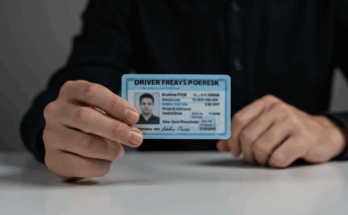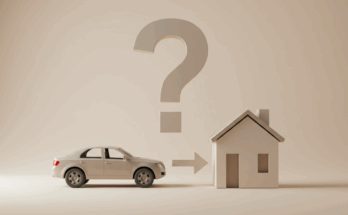When it comes to car insurance, understanding what your policy covers can feel like deciphering a foreign language. Terms like “comprehensive” and “collision” get thrown around, but what do they actually mean? More importantly, how do they impact your financial safety when the unexpected happens? In this post, we’ll break down these two coverage types so you can make informed decisions about your insurance.
![[Comprehensive vs Collision] What Does Your Policy Really Cover?](https://luzo.top/wp-content/uploads/2025/08/comprehensive-vs-collision-what-does-your-policy-really-cover-1024x640.png)
What Is Comprehensive Coverage?
Comprehensive coverage is often described as protection against “everything except collisions“. While that might oversimplify things, it’s not far from the truth. This type of coverage is designed to protect your vehicle from non-driving-related incidents. Think of it as insurance for the unpredictable events that life throws your way.
➠ Here’s a list of situations typically covered under comprehensive insurance:
- Theft: If your car is stolen, comprehensive insurance can help cover the loss.
- Vandalism: Whether it’s graffiti or a smashed window, this coverage steps in.
- Natural Disasters: Damage caused by floods, hurricanes, earthquakes, or other weather-related events is often included.
- Fire: If your car is damaged or destroyed by fire, comprehensive insurance covers the repair or replacement costs.
- Falling Objects: Yes, that includes things like tree branches or debris from construction sites.
- Animal Collisions: If you hit a deer or other animal, comprehensive coverage can help with repair costs.
- Broken Glass: Damage to your windshield or windows is typically included.
Comprehensive coverage is invaluable for protecting against scenarios that are out of your control. However, it’s worth noting that this type of insurance doesn’t cover any damage resulting from a collision with another vehicle or object.
What Is Collision Coverage?
Collision coverage is exactly what it sounds like, it protects your vehicle in the event of a collision. Whether you hit another car, a stationary object (like a pole or fence), or even roll your vehicle, collision insurance helps cover the cost of repairs or replacement.
⇢ Here’s what collision insurance typically covers:
- Accidents with Other Vehicles: If you’re at fault in a crash, collision coverage pays for damages to your car.
- Single-Car Accidents: If you hit a guardrail, tree, or any other stationary object, this coverage applies.
- Rollovers: If your car flips over due to an accident, collision insurance steps in.
Unlike comprehensive coverage, collision insurance is focused solely on driving-related incidents. It’s particularly important if you’re financing or leasing your car, as lenders often require it.
Key Differences Between Comprehensive and Collision Coverage
⇢ While both types of coverage protect your vehicle, they address very different scenarios. Here’s a side-by-side comparison to clarify their distinctions:
| Aspect | Comprehensive Coverage | Collision Coverage |
|---|---|---|
| What It Covers | Non-driving-related incidents (theft, weather, vandalism) | Driving-related incidents (collisions with vehicles/objects) |
| Who’s at Fault | Fault doesn’t matter—covers external events | Typically covers damage regardless of fault |
| Required by Lenders | Often required for financed/leased vehicles | Usually required for financed/leased vehicles |
| Deductible | Yes, you choose your deductible amount | Yes, you choose your deductible amount |
Do You Need Both?
Deciding whether you need comprehensive and collision coverage depends on several factors, including the value of your vehicle, your financial situation, and your risk tolerance.
➢ Here are some considerations:
- Vehicle Value: If your car is older and worth less than what you’d pay for repairs or replacement, you might opt out of one or both coverages.
- Driving Environment: Do you live in an area prone to natural disasters? Do you park on the street where theft or vandalism is a concern? Comprehensive coverage might be essential.
- Budget: Adding both coverages can increase your premium significantly. Weigh the cost against the potential risk.
- Loan or Lease Requirements: If you’re financing or leasing your car, you may not have a choice, lenders often require both types of coverage.
How Deductibles Work
Both comprehensive and collision coverage come with deductibles. This is the amount you pay out-of-pocket before your insurance kicks in. For example, if you have a $500 deductible and repairs cost $2,000, your insurer will cover $1,500.
Choosing your deductible is a balancing act. A higher deductible lowers your premium but increases your out-of-pocket costs in the event of a claim. Conversely, a lower deductible raises your premium but reduces what you pay if something happens.
Conclusion
Comprehensive and collision coverage serve as financial safety nets for different situations. While comprehensive protects against non-driving-related events like theft and natural disasters, collision covers damages from accidents involving vehicles or objects. Together, they provide robust protection for your car, but they’re not always necessary for every driver.
Understanding what these coverages entail allows you to tailor your policy to fit your needs and budget. Take stock of your vehicle’s value, driving habits, and environment to determine whether adding one or both is worth it. After all, peace of mind is priceless when life throws its curveballs. Do you have questions about car insurance or need help navigating policy options? Drop them in the comments below, we’re here to help.



